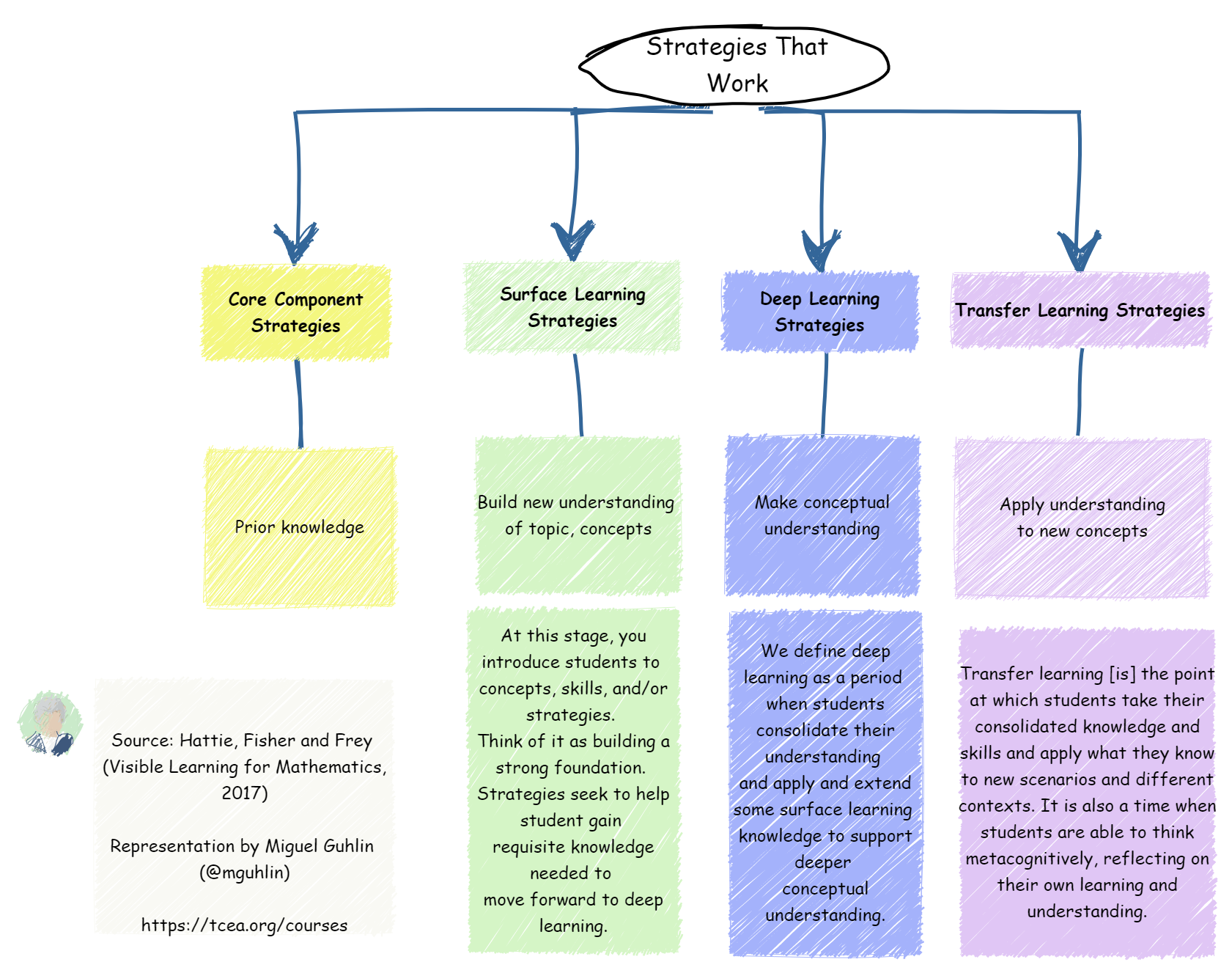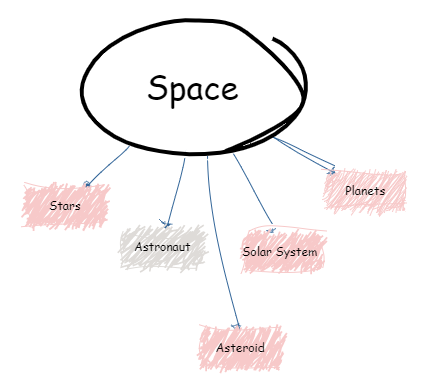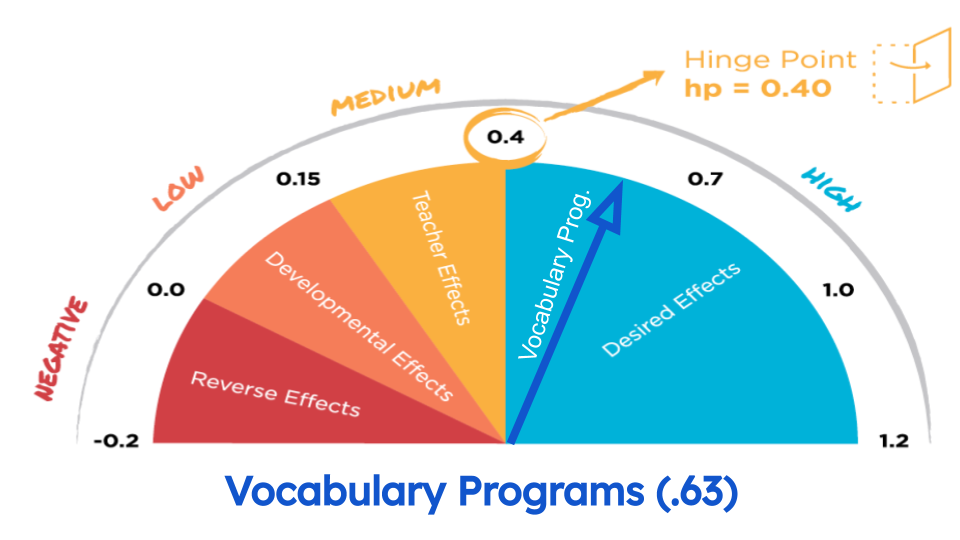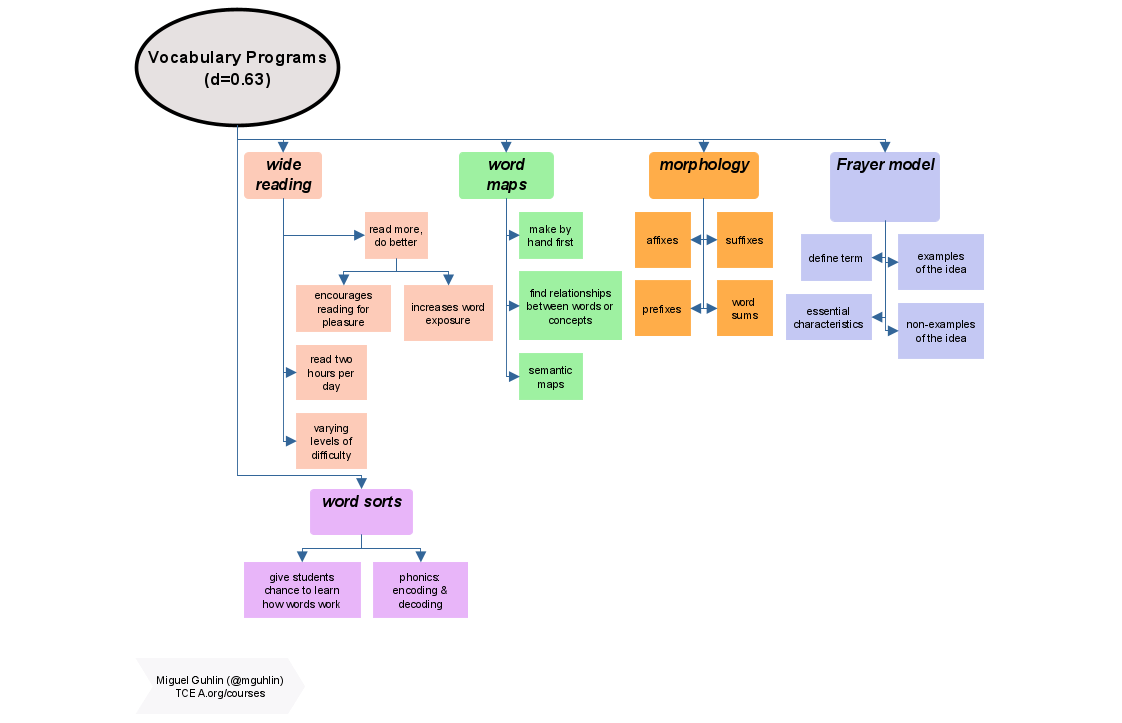What teacher isn’t looking for an amazing way to engage students in learning? Whether it’s a different evidence-based strategy or technology, you want to maximize student learning. In previous blog entries, we’ve explored powerful, high-effect size instructional strategies; if you use the right strategies at the appropriate time, you are guaranteed to accelerate student learning. In this blog entry, we’ll explore another powerful strategy: semantic maps.
The Correct Approach at the Right Time
“What and when are equally important when it comes to instruction that has an impact on learning. Approaches that facilitate students’ surface-level learning do not work equally well for deep learning, and vice versa.
Matching the right approach with the appropriate phase of learning is the critical lesson to be learned.” Source: Hattie, Fisher and Frey (Visible Learning for Mathematics, 2017)
The authors of the Visible Learning books point out that surface learning is a time when students are initially exposed to concepts, skills, and strategies. Surface learning is critical because it provides a foundation on which to build as students are asked to think more deeply. But there are other “buckets” for learning strategies.

Matching Strategies to the Right Phase of Learning
When I first started teaching, I imagined one huge bucket of instructional strategies I could reach into regardless of what I was teaching, I could use any instructional strategy to engage students. Some activities worked well; others not so much. One reason may have been my lack of awareness about the appropriate time to use those certain strategies.

For example, have you relied on the flipped classroom strategy? Did you use the strategy to introduce students to new concepts or to encourage them to apply what they’ve learned to a new situation? If the latter, you may have misapplied the strategy. Surface learning strategies like flipped classroom (d=0.58) work great when introducing students to ideas. Consider these points from Mr. Hill:
“By introducing surface level content before class, we can utilize face-to-face classroom time for deeper learning and application. Students need their teachers during these cognitively challenging tasks. Content such as facts and procedures are important but students can access these without the teacher. Our time with students is limited and precious, so we should use it for tasks in which students actually need us.” Source: Hattie on Homework Support for Flipped Learning
Are you using instructional strategies at the appropriate moment? Like me, you may need a few more mental buckets to organize strategies into.
Learning Strategies Buckets
It’s almost irreverent to refer to the various types of learning strategies as “buckets.” But to keep the idea simple, we can sort various strategies like beans into the right bucket. Those can include the following:
- Surface learning strategies = Content focused
- Deep learning strategies = Relationship in and among content
- Transfer learning strategies = Transfer of new skills to new situations or tasks
When we are introducing new content, we reach into the surface learning strategies bucket. Which will work best? For example, if we’re working with K-2 students on reading, we can rely on strategies like vocabulary programs (d=0.63). In this blog entry, we’ll take a closer look at semantic maps and the Frayer Model. These two components fit into the vocabulary programs strategy as a way to make sense of words and concepts. Before we do that, let’s see how semantic maps and the Frayer Model fit into vocabulary programs.

Vocabulary Programs (d=0.63)
John Hattie’s research suggests that vocabulary programs are one of the best surface learning strategies. The effect size of vocabulary programs strategy is (d=0.63). Compared to the hinge point of d=0.40, this means significant acceleration of student learning can take place. This is because vocabulary knowledge and reading comprehension have a strong relationship.
Want to Play a Game?
Check out Ashleigh‘s adaptation of Robert Marzano’s six step approach to teaching academic vocabulary (link includes Frayer Model as well). She calls it, Mile-a-Minute, and the game relies on a Google Slides deck you can start with. She offers it as a handy review of academic vocabulary students may have already learned. Give it a try. Is there a game or way that you approach vocabulary instruction?
The vocabulary programs strategy is composed of multiple components, such as:
- Morphology instruction – This includes learning about root words, prefixes/suffixes, and more. Learn more.
- Semantic maps/Frayer Model – Exploring word or concept maps that display the relationship between words in a visual manner.
- Word and concept sorts – Evidence-based phonics approaches (e.g. encoding/decoding) to finding predictable patterns in words. Learn more.
- Wide reading – This involves providing access to a wide variety of reading materials at different levels of difficulty. See the resources to learn more.
You could spend quite a bit of time learning about morphology instruction, as well as varied vocabulary programs available. Let’s take a look at semantic maps.

yED Live makes it easy to add a hand-drawn effect to any semantic/concept map you construct.
Semantic Maps
As a high school student, I learned to use semantic maps to explore ideas in doodles. It soon became an essential way for me to pick out the critical vocabulary words and concepts in academic readings. In fact, it was such a powerful tool for me that I adopted it for note taking, brainstorming, and playing with words.

That’s because semantic maps offer a visual way of viewing “meaning-based connections between a word or phrase and a set of related words or concepts” (source: Reading Rockets).
Semantic mapping is a visual strategy for vocabulary expansion and extension of knowledge by displaying in categories words related to one another” (Kholi and Sharifafar, 2013). These almost graphic organizers are not pre-made, but made by the students to help “web” out their ideas. [Semantic maps] build on students’ background knowledge or schema. While drawing on prior knowledge, it recognizes important components and shows the relationships among them” (Kholi
and Sharifafar, 2013) as cited in Vocabulary and Fluency Classroom Strategies.
Semantic maps, word or concept, are easy to make with paper and pencil. As the digital tools became available, I started relying on an old time favorite, Inspiration. Today, you can find a variety of digital tools to support semantic map making.

Digital Tool for Semantic Maps
Want to use your Windows 10, Mac, or Chromebook to make a semantic map? Check out the amazing yED Graph Editor. The website describes it in this way:
yEd is a powerful desktop application that can be used to quickly and effectively generate high-quality diagrams. Create diagrams manually, or import your external data for analysis. Our automatic layout algorithms arrange even large data sets with just the press of a button. yEd is freely available and runs on all major platforms: Windows, Unix/Linux, and macOS.
Use yED Graph Editor to create beautiful word maps or concept maps. While you can use the program on your Windows, Mac, or GNU/Linux computer, you can also use it in the browser. yED Live is the online, live version that features Google Drive integration (as well as other cloud storage tools) and the ability to export files. Watch this short video overview combining semantic maps with yED Live:
In the next blog entry, we’ll explore the Frayer Model, as well as concept sorts in another. It’s another amazing tool for vocabulary comprehension.

